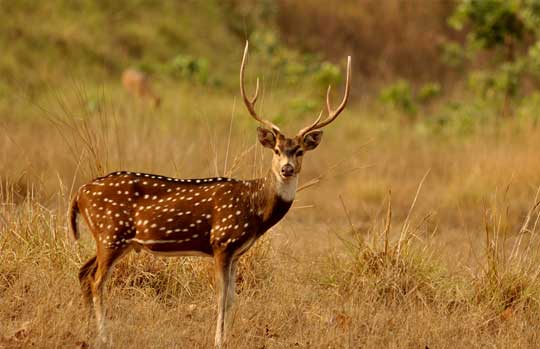Fauna
The Gir Sanctuary has a wide variety of animals, the main one being the critically endangered Asiatic Lion, which are best spotted at dawn or dusk when they are on the move. Gir lions, loners, pairs or pride, when out on patrol, perceive little threat from humans and can be seen from relatively close quarters. The Park's primary carnivores apart from Lions mainly comprise the Indian Leopard, Jungle Cat, Striped Hyena, Jackal, Bengal fox, Desert Cat & Mongoose. The main herbivores of Gir are Chital Deer, Blue Bull, Sambar Deer, Four-horned Antelope, Chinkara and Wild Boar. Blackbucks from the surrounding area are seen in the sanctuary. Among the smaller mammals, Porcupine and Hare are common.




